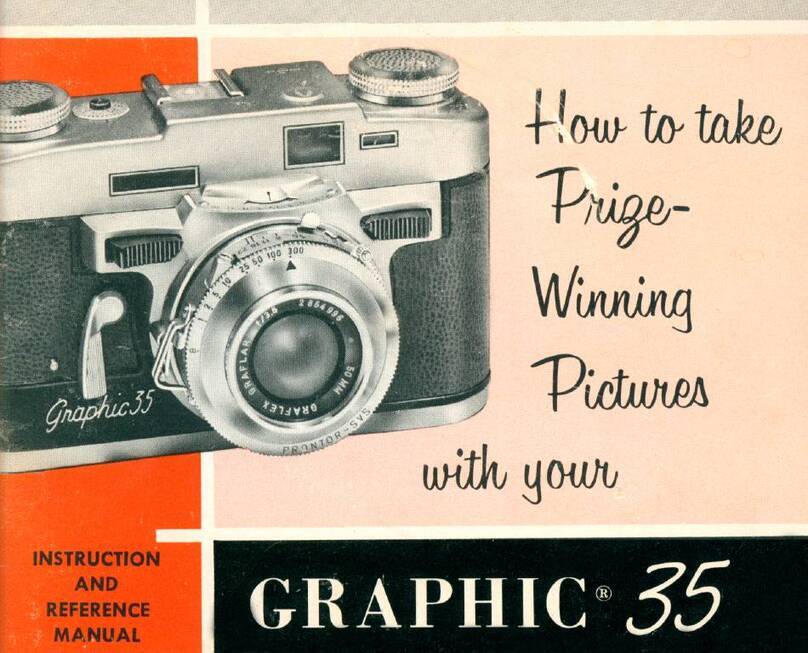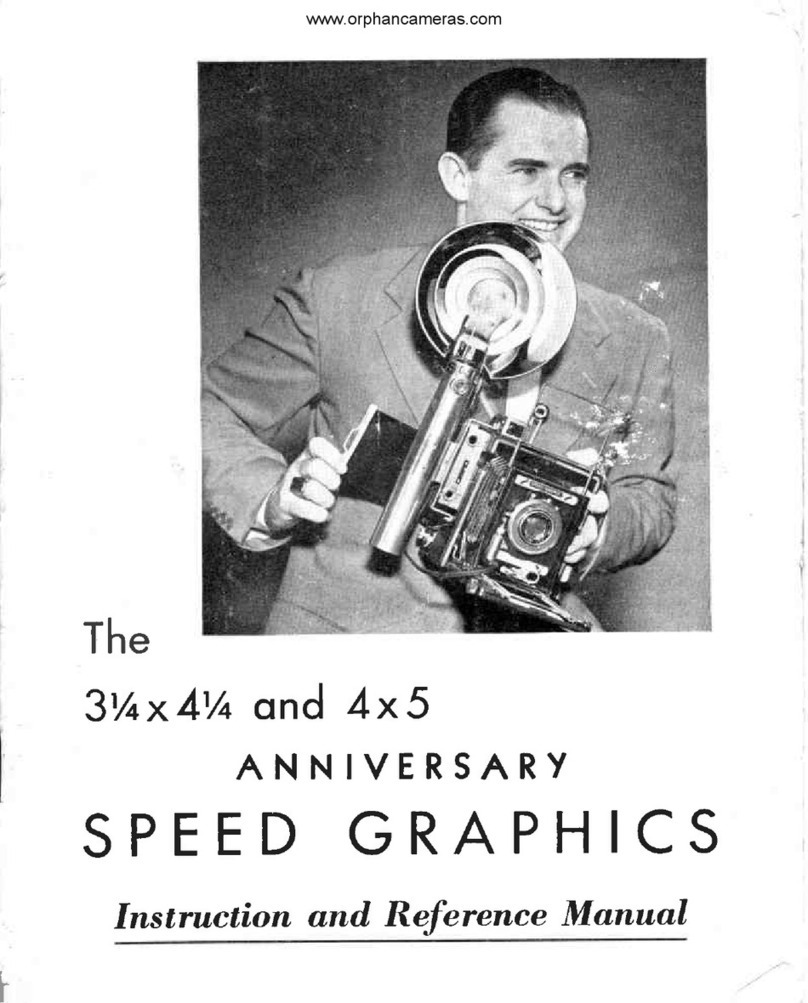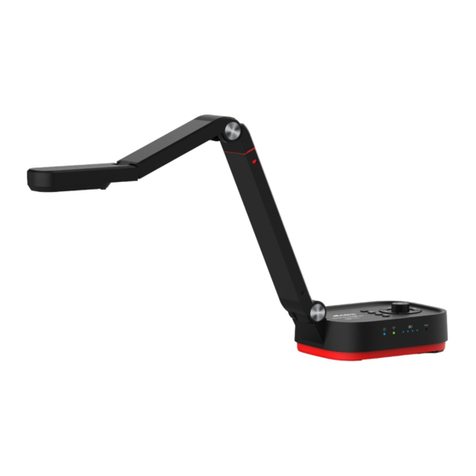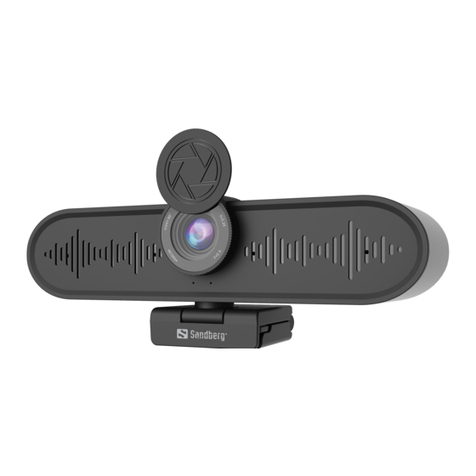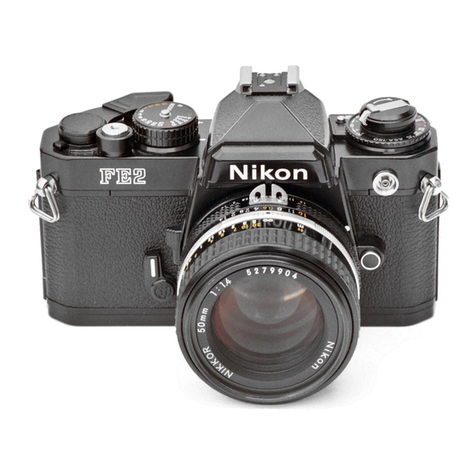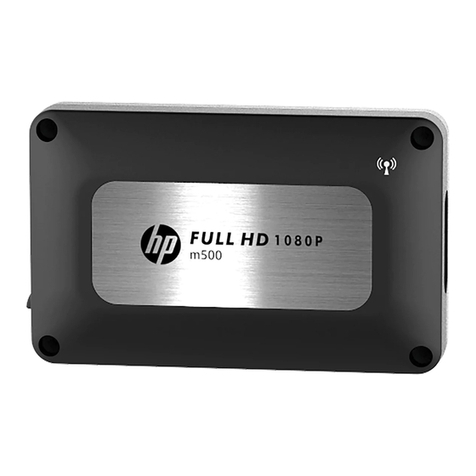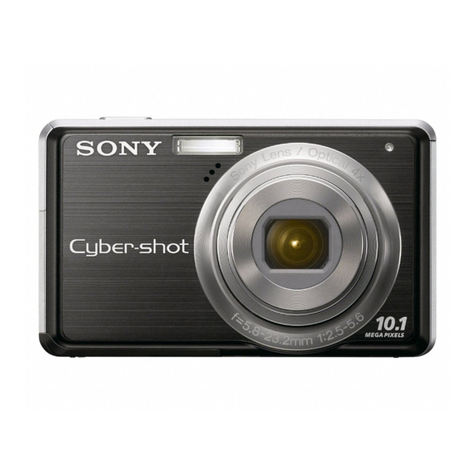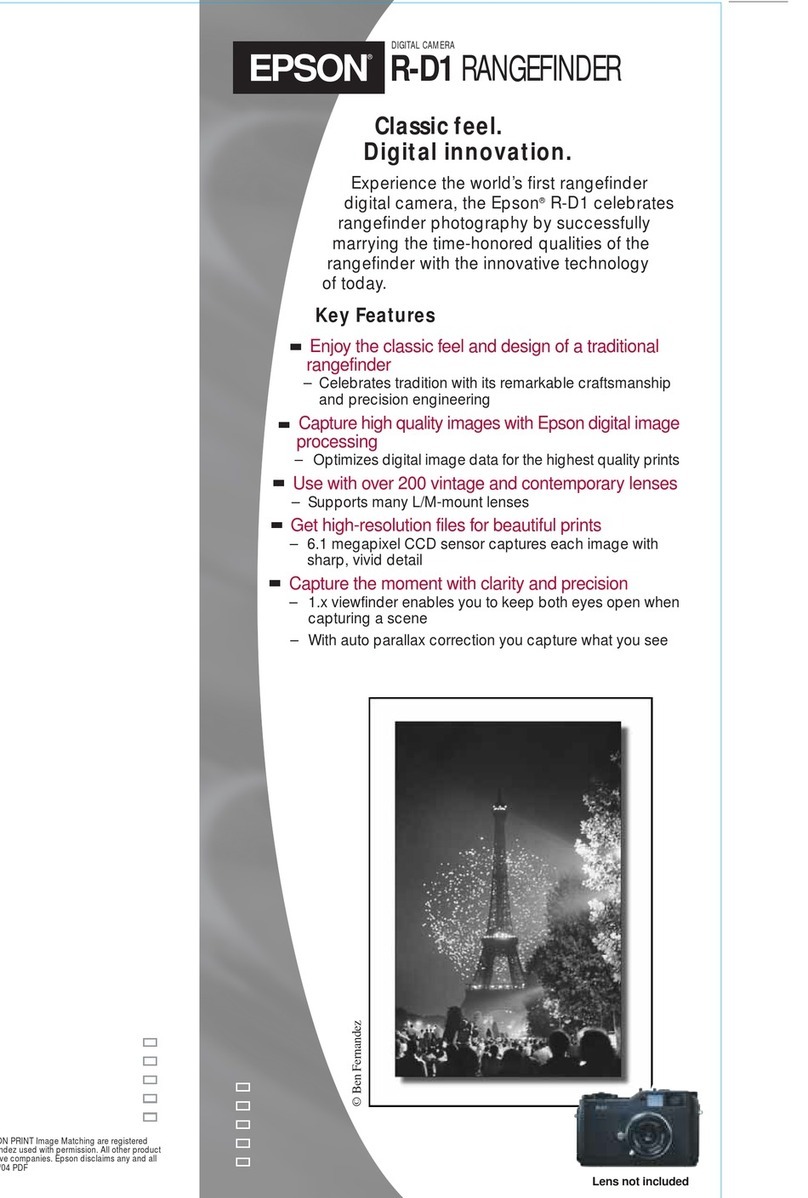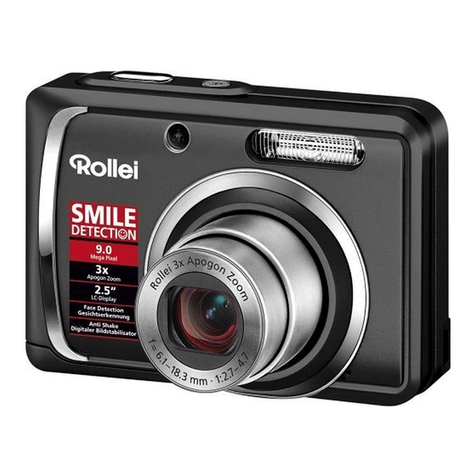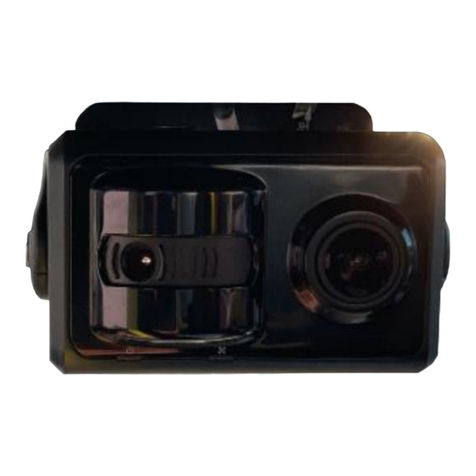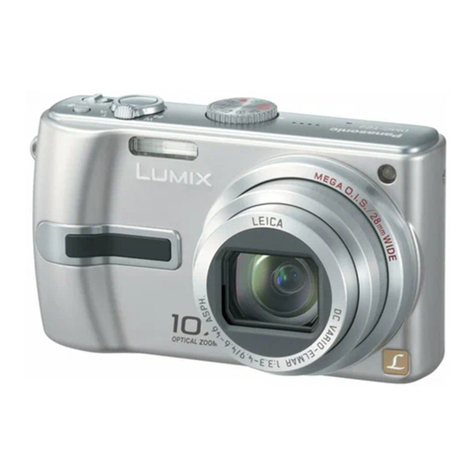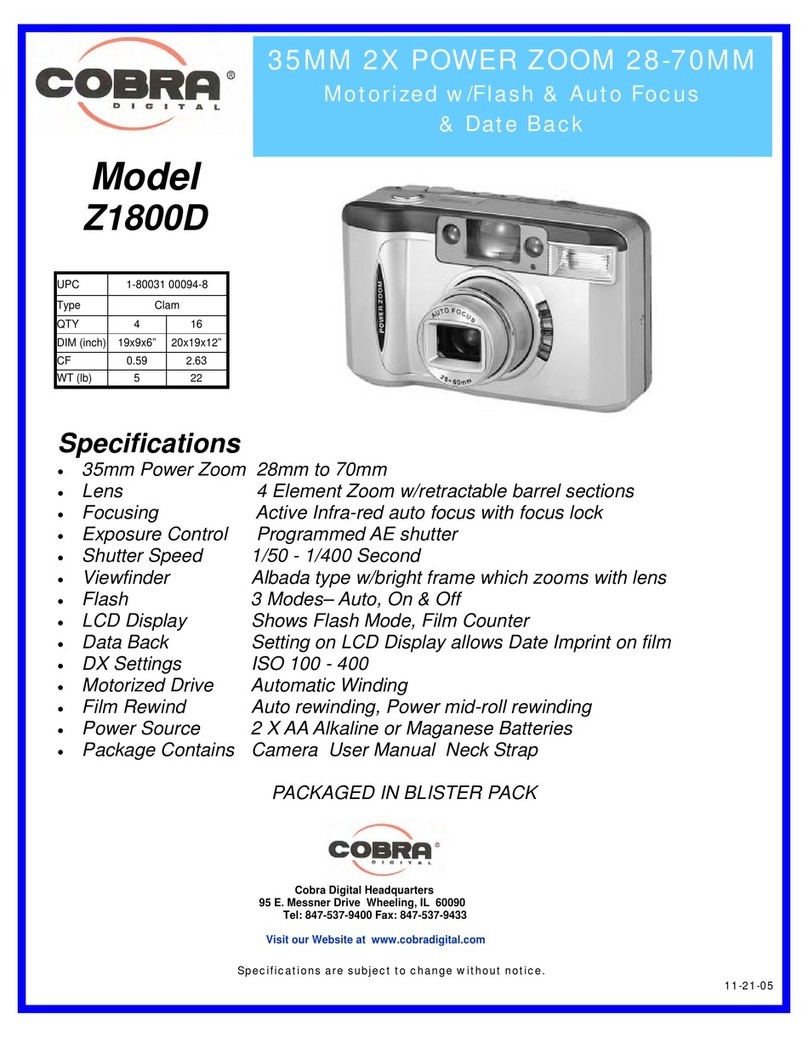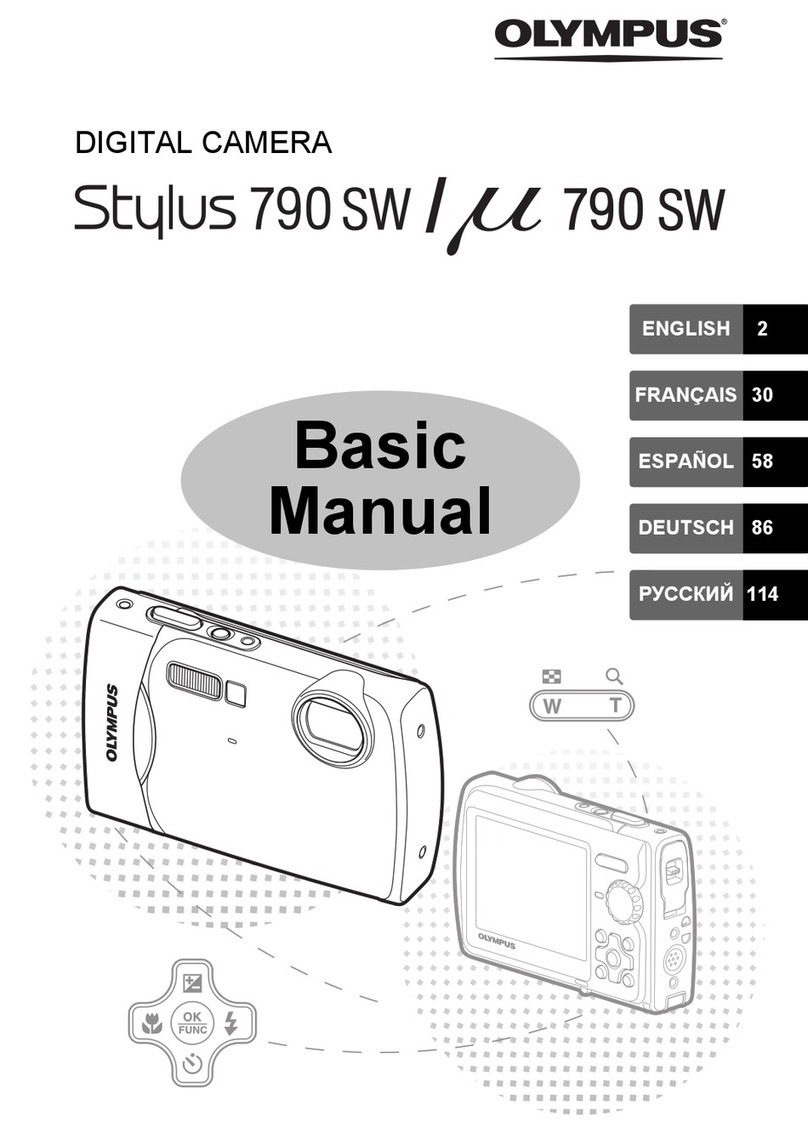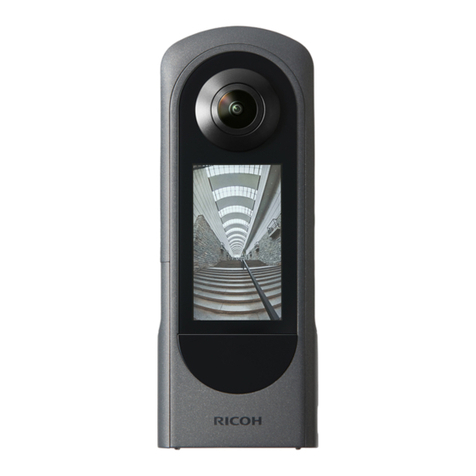Graflex SUPER SPEED GRAPHIC Operating instructions

Price
$5
.
00
SECTION 8
SUPER GRAPHIC
and
®
SUPER
SPEED
GRAPHIC
GRAFL
E
X,
INC
. .
A
SUBS
I D ,'
ARY
OF
GE
NERAL
PRECISION
EQUIPMENT
CORPOR
AT
ION
~
SERVICE INSTRUCTIONS.
and
PARTS CATALOG
MAY
1961
PRIN
TED
U.
S.
A.

Paragraph
A
B
C
D
E
F
G
H
J
K
L
M
N
P
Q
R
S
T
U
V
W
X
Figure
1
lA
2
3
4
5
6
7
8
9
10
11
12
TABLE
OF
CONTENTS
Introduc
tion. . 1
Camera
Complete.
. . . . . . . . . . . . . . . . . . . . . . . . . . .
..
1
Optical
Measurement
of
Lens
Travel.
. . . . . . . . . . . . . .
..
1
Rangefinder.
.
..
. . . . . . . . . . . . . . . • . . . . . . . . . . . .
..
2
Rangefinder
Operation.
. . . . . . . . . . . . . . . . . . . . . . . .
..
3
Rangefinder
Infinity
. . . . . . . . . . . . . . . . . . . . . . . . . .
..
3
Double
Image
Adjustment.
. . . . . . . . . . . . . . . . . . . . . .
..
3
Actuating
Bracket
Adjustment.
. . . . . . . . . . . . . . . . . . .
..
3
Rangefinder
and
Lens
Synchronizat
ion
...............
, 3
Multiple
Lens
Fitting
. . . . . . . . . . . . . . . . . . . . . . . . .
..
4
Rangefinder
Housing
Exchange.
. .
..
..
. . . . . . . . . .
..
4
Rangefinder
Trouble
Shooting
Chart.
. . . . . . . . . . . . . . .
..
4
Service
Equipment.
. . . . . . . . . . . . . . . . . . . . . . . . . .
..
5
Super
Graphic
Analyzer
-
General.
. .
..
. . . . . . . . . . . 5
Super
Graphic
Analyzer
-
Materials
. . . . . . . . . . . . . . .
..
6
Super
Graphic
Analyzer
-
Calabration
.........
~
. . . .
..
11
Super
Graphic
Analyzer
Camera
Test
. . . . . . . . . . . . . .
..
12
Camera
Basic
-
Disassembly
and
Reassembly.
. . . . . . . .
..
17
Focusing
Frame
Assembly
-
Disassembly
and
Reassembly..
19
Front
Standard
Complete
-
Disassembly
and
Reassembly
.
..
21
Rangefinder
Housing
Complete
-
Disassembly
and
Reassembly
22
Bed
Complete
-
Disassembly
and
Reassembly.
. . . . . . . .
..
25
Back
Assembly
-
Disassembly
and
Reassembly.
. . . . . . .
..
26
Parts
List
Introduction.
. . . . . . . . . . . . . . . . . . . . . . . . . 29
Camera
Complete
-
Super
Graphic
. . . . . . . . . . . • . . . .
..
30
Camera
Complete
-
Super
Speed
Graphic.
. . . . . . . . . . .
..
30
Camera
Basic
(Cameras
bearing
serial
no.
over
646124)
...
32
Focusing
Frame
Assembly
........................
35
Front
Standard
Complete
(Cameras
bearing
serial
no.
over
646124)
..........................
36
Rangefinder
Housing
Complete
(Cameras
bearing
serial
no.
over
646124)
.......................
41
Bed
Complete
. . . . . . . . . . . . . . . .
..
. . . . . . . . . . . .
..
46
Back
Assembly
......................
'. . . . . . .
..
48
Body
Complete
(Cameras
bearing
serial
no.
over
646124)
...
52
Camera
Basic
(Cameras
bearing
serial
no. up to
646124)
...
54
Front
Standard
Complete
(Cameras
bearing
serial
no. up to
646124)
..........................
57
Rangefinder
Housing
Complete
(Cameras
bearing
serial
no.
up
to
646124)
.......................
59
Body
Complete
(Cameras
bearing
serial
no. up to
646124)
...
62

Camera
Complete
SUPER
GRAPHIC &
SPEED
GRAPHIC
Section
8
,
'-....
I'
LENSBOARD
ASSEMBLY
, INFINITY'-....J..,...i
"4J/'
STOPS~
.......
I
LENS
AND----1J.---'fo:'\
SHUTTER
LENS CAM
Figure
1.
CAMERA
COMPLETE
INTRODUCTION
This
section
on
the
Graflex
Service
Parts
Manual
covers
the
Service
Instructions
and
Parts
List
for
the
Super
Graphic
and
Super
Speed
Graphic
Cameras.
The
text
and
illustrations
are
based
on
the
Super
Graphic
Camera.
The
differences
between
the
Super
Graphic
and
the
Super
Speed
Graphic
are
clearly
de-
scribed
in
the
Parts
List.
A.
CAMERA
COMPLETE
The
Super
Graphic
Camera
(Figure
1)
includes
a
camera
basic,
standard
shutter
(with
lens)
mounted
in
a
Super
GraphiC
Lensboard
Assembly,
matching
lens
cam
and
a
set
of
infinity
stops
to
match
the
focal
length
of
the
lens.
The
Super
Speed
Graphic
Camera
is
identical
to
the
Super
GraphiC
except,
the
Super
Speed
Graphic
is
equipped
with a
Graflex
1000
Shutter.
The
Graflex
1000
Shutter
does
not
require
a
lensboard
for
mounting.
NOTE:
The
lens
cam
is
selected
after
the
lens
has
been
optically
measured
for
actual
focal
length
(lens
travel).
B.
OPTICAL
MEASUREMENT
OF
LENS
TRAVEL
Optical
measurements
are
best
determined
through
the
use
of a
collimator
with
an
accurate
measuring
device.
Lens
is
set
up and
focused
on
theoretical
infinity
and
the
measuring
device
set
for
O.
Lens
movement
is
measured
(to
nearest.
001
of
an
inch)
from
infinity
to
the
following
near
distance:
Lens
Focal
Length
3 to 7
inch
7 to 15
inch
Near
Distance
(target
to
film
plane)
4
feet
10
feet
At
least
three
different
readings
should
be
taken
and
recorded
to
insure
that
a
satisfactory
figure
has
been
obtained.
If
equipment
is
not
available,
send
lens
and
shutter
to
nearest
Graflex
Service
Department
for
collimation
and
selection
of
cam.

Section
8
C.
RANGEFINDER
SUPER
GRAPHIC &
SUPER
SPEED
STATIONARY I
MIRROR )
r i
I I
I I
Rangefinder
I
'~
I
~-~
I
'
~-
LOCKING SCREW
(DO NOT LOOSEN)
I
I
EXTERNAL
PLUNGER
Figure
2. RANGE
FINDER
OPERATION
The
rangefinder
is
mounted
in
a
drawer
type
hous-
ing"
located
under
the
top
section
of the
camera.
Once
the
rangefinder
is
adjusted,
it
can
be
used
with
a wide
variety
of
lenses
through
the
use
of
lens
cams.
Lenses
may
vary
in
focal
length
from
wide angle
through
telephoto.
2

Rangefinder
Operation
SUPER
GRAPHIC &
SUPER
SPEED
Section
8
D. RANGEFINDER
OPERATION
(Figure
2)
To
adjust
the
rangefinder,
it
is
important
to
under-
stand
its
operation.
A
bracket
on the
left
side
of
the
bed
yoke
engages
a
slide.
The
slide
is
assembled
to
a
pin
located
on
the
underside
of
an
external
plunger.
The
slide
and
plunger
are
part
of
the
rangefinder
tube
assembly.
The
external
plunger
transmits
its
motion
through
a
column
of
balls
and
spacers
inside
the
rangefinder
tube
to
an
internal
plunger
that
pushes
the
lens
cam
to
the
right.
The
lens
cam
presses
against
a
spring
loaded
plunger
supplying
force
to
return
the
lens
cam
to
its
original
position
when
the
yoke
is
moved
outward.
The
bed
yoke
is
moved
in
or
out
for
focusing.
The
rangefinder
arm
rides
on
the
lens
cam;
motion
of
the
arm,
caused
by
the
cam,
is
transmitted
to
the
movable
mirror
shaft.
The
rangefinder
lever
also
rides
against
the
formed
end
of the
rangefinder
arm
transmitting
its
motion
to a
gear
sector
which
meshes
.
with
a
pinion.
This
linkage
is
spring
loaded
against
the
formed
end
on
the
rangefinder
arm
by
a
coil
spring
wound
to
this
pinion
shaft.
The
shaft
of
the
pinion
protrudes
through
the
top of the
camera.
An
indicator
is
pressed
onto
the
pinion
shaft
when
range-
finder
infinity
has
been
established.
The
image
reflected
off the
movable
mirror
can
be
brought
to
coincide
with
the
image
seen
through
the
stationary
semi
-
transparent
mirror
by
rotating
the
movable
mirror.
When
these
two
images
are
in
co-
inCidence
at
the
same
time
that
the
object
image
seen
through
the
lens
is
in
sharp
focus
on the
ground
glass,
the
rangefinder
and
camera
lens
are
in
com-
plete
synchronization.
E.
RANGEFINDER INFINITY
Rangefinder
infinity
is
determined
through
the
use
of a
collimator
and
using
theoretical
infinity.
Special
optical
equipment
and
gages
are
required
for
locat-
ing
and
alignment
of
the
movable
mirror
. When
these
adjustments
have
been
accomplished,
the
locking
screw
on the
rangefinder
arm
is
tightened
to
main-
tain
this
fixed
infinity
setting.
This
locking
screw
should
not
be
loosened.
See
Par.
K
for
ran
g
efinders
requiring
fixed
infinity
settin
g.
F _DOUBLE IMAGE ADJUSTMENT
1.
Remove
battery
cover
and
batteries.
2.
Remove
clip
and
locate
the
lock
spring
on
roof
of
battery
compartment
and
swing
toward
rear
of
cam-
era.
This
will
release
the
focusing
scale
cover
as-
sembly.
3.
Remove
the
exposure
guide
and
exposure
guide
spring.
When
performing
this
operation
be
careful
not
to
bend
or
twist
the
focusing
scale
indicator
on
the
pinion
shaft,
otherwise
it
will
be
necessary
to
replace
the
indicator.
4.
Remove
the
lens
cam;
this
in
turn
will
allow
the
focusing
scale
indicator
to
swing
clear
of
the
fo -
CUSing
scale
plate.
5.
Replace
the
lens
cam
in
slot
in
rangefinder
tube.
6. With a
screwdriver,
locate
slot
in
adjusting
screw
(located
under
hole)
in
uncovered
portion
of
the
camera
body.
To
raise
image,
turn
adjusting
screw
counterclockwise.
To
lower
image,
turn
ad-
justing
screw
clockwise.
G. ACTUATING BRACKET ADJUSTMENT
Whenever
the
rangefinder
housing
has
been
re-
moved
from
'the
camera
or
the
actuating
bracket
is
being
replaced
or
repositioned,
the
following
p"o-
cedure
should
be
followe'd:
1.
Insert
lens
cam
incam
slotinrangefindertube
assembly
and
move
the yoke
inward
and
outward
several
times
to
make
sure
lens
cam
is
in
position
and
functions
properly.
2.
Focus
rangefinder
on
infinity
target
over
5000
ft.
and
rack
the
bed
yoke
inward
until
it
is
within
0.040
±. 010
inch
from
the yoke
stop
and
lock
bed
yoke
in
this
position.
N.OTE:
It
is
importantthat
0.040
±. 010
dimen-
sion
be
maintained
in
order
that
all
focusing
may
be
accomplished
with a
forward
movement
of
the
bed
yoke.
Slide
the
actuating
bracket
on the
bed
yoke
until
the
formed
down
portion
of
actuating
bracket
engages
the
slide.
Focus
rangefinder
on
infinity
target
and
Simultaneously
move
actuating
bracket
on
bed
yoke
until
rangefinder
focus
is
in
coincidence
with the
in-
finity
target.
Secure
actuating
bracket
in
this
position
using
two
screws.
If
rangefinder
housing
has
been
removed,
press
new
indicator
in
position
on
pinion
shaft
so
that
indicator
will
pOint to
infinity
(00)
lo-
cation
on
focusing
scale
plate.
Apply
small
amount
of M373 Bond
Master
adhesive
in
cup
portion
of
indi-
dlcator
to
give
added
support.
3.
Assemble
the
front
standard
complete,
if
re-
moved,
and
proceed
with
lens
and
rangefinder
syn-
chronization(Par.
H).
H. RANGE FINDER AND LENS SYNCHRONIZATION
Use
lensboard
assembly
(with
lens)
and
lens
cam
which
were
originally
fitted
to
the
camera
and
pro
-
ceed
as
follows:
1.
Rack
bed
yoke
outward
and
install
lens
cam
in
canl
slot
in
rangefinder
tube.
Rack
bed
yoke
inward
and
outward
severaL
times,
m~king
sure
that
cam
is
in
position
and
functions
properly.
2.
Focus
rangefinder
on
infinity
target
over
5000
ft.
and
check
rangefinder
infinity
focus.
Lock
bed
yoke
in
this
position.
The
indicator
on
top of
camera
should
point
to
infinity
(00)
position
on
focusing
scale
plate.
If
necessary,
make
double
image
adjustment.
3.
Position
lensboard
assembly
(with
lens)
in
front
standard
making
sure
lensboard
is
square
in
front
frame
and
securely
locked
in
place.
4.
Pull
front
standard
out
to
existing
infinity
stops
and
lock
front
standard
in
this
position.
Use
a
square
to
check
squareness
of
front
standard
on
bed
yoke.
Adjust
if
necessary.
5.
Check
ground
glass
focus
of
lens,
using
same
target
as
in
2
above.
If
rangefinder
and
lens
focus
coincide;
unlock
bed
yoke and
rack
forward
to
near
distance
of
the
lens
used,
lock
bed
yoke
in
this
positi.on and
recheck
coincidence.
If
in
coinCidence,
proper
rangefinder
and
lens
are
in
complete
synchro-
nization.
3

4
Section
8
SUPER
GRAPFnC &
SUPER
SPEED
Multiple
Lens
Fitting
J.
MULTIPLE
LENS
FITTING
Before
additional
lenses
are
fitted
to
the
camera,
it
must
be
determined
if
original
lensboard
assem-
bly
(with
lens)
is
in
synchronization
with
the
range-
finder.
1.
Repeat
Rangefinder
and
lens
synchronization
(Par.
H).
2.
Rack
bed
yoke
outward
and
remove
original
lens
cam
and
lensboard
assembly
(with
lens)
and
insert
lens
cam
for
new
lens
to
be
fitted.
Rack
bed
yoke
inward
and
outward
several
times,
making
sure
cam
is
in
position
and
functions
properly.
3.
RaGk
bed
yoke
inward
to
infinity
position
of
the
rangefinder
and
lock
bed
yoke
in
this
position.
The
indicator
will
point
to
infinity
(00)
position
on
focus-
ing
scale
plate.
4.
Position
new
lensboard
assembly
(with
lens)
in
front
standard
making
sure
lensboard
is
square
and
securely
locked
in
place.
5.
Tip
down
infinity
stops
(original)
to
permit
free
movement
of
the
front
standard
on
the
bed
yoke.
6.
Focus
new
lens
on
infinity
target
over
5000
ft.
and
move
front
standard
so
that
lens
focuses
a
sharp
infinity
target
on
ground
glass
and
lock
front
stand-
ard
in
this
position.
Use
a
square
to
check
the
squareness
of
front
standard
on
bed
yoke.
Assemble
two
additional
infinity
stops
in
position.
7.
Check
ground
glass
focus
of
lens,
using
same
target
as
in
6
above.
If
rangefinder
and
lens
focus
co-
incide,
unlock
bed
yoke and
rack
forward
to
near
dis-
tance
of
the
lens
used,
lock
bed
yoke
in
this
position
and
recheck
coincidence.
If
in
coincidence;
proper
range-
finder
and new
lens
are
in
complete
synchronization.
K. RANGE FINDER HOUSING EXCHANGE
Whenever
the
fixed
infinity
setting
of
the
range-
finder
needs
to
be
established,
it
is
recommended
:that
the
rangefinder
housing
assembly
be
removed
from
the
camera
and
returned
to
the
nearest
Graflex
Service
Department.
An
alternate
factory
reconditioned
range-
finder
housing
assembly
will
be
returned
(nominal
charge)
with
rangefinder
infinity
and
lever
adjustments
accomplished
and
ready
for
installation.
See
Par.
S.
1. a
thru
j
for
removal
of
the
rangefinder
housing
as-
sembly.
L.
RANGE
FINDER
TROUBLE SHOOTING CHART
The
following
table
of
potential
troubles,
causes
and
remedies,
is
supplied
to
expedite
service
of
com-
mon
difficulties.
NOTE:
Repairs
that
involve
the
removal
of
the
rangefinder
housing
assembly
from
the
camera
or
an
adjustment
to
the
rangefinder
actuating
bracket,
refer
to
Par.
G.
TROUBLE CAUSE REMEDY
Indicator
does
not
locate
on
in-
Indicator
loose
on
pinion
shaft.
Replace.
flnity
(00)
position
on
focusing
scale
plate.
Gear
Sector
loose
on
its
shaft.
Replace.
Broken
pinion
spring,
worn
Replace.
teeth
on
pinion
or
gear
sector.
With
yoke
racked
all
the
way
Actuating
bracket
has
shifted
Adjustor
replace.
back,
rangefinder
will
not
forward
or
is
bent.
(see
paragraph
G)
come
into
coincidence
at
in-
finity.
Double
image.
Stationary
mirror
out of
height
Adjust.
adjustment
with
movable
mirror.
(see
paragraph
F)
No
superimposed
image
on
Movable
mirror
broken,
fallen
(see
paragraph
K)
stationary
mirror.
off,
or
movable
mirror
shaft
is
out
of
position
thus
causing
fixed
infinity
setting
of
range-
finder
to
be
out
of
adjustment.
Movable
image
travel
is
in
Springs
supporting
movable
Rehook
or
replace
(providing
diagonal
direction
instead
mirror
shaft
in
position
in
V
movable
mirror
has
not
shifted
of
horizontal.
slot
have
become
unhooked
or
and
caused
fixed
infinity
setting
broken.
of
rangefinder
to
be
out
of
ad-
justment.
(see
paragraph
K)

Service
Test
Equipment
SUPER
GRAPHIC &
SUPER
SPEED
Section
8
POWER
ON
@)
OFF
Power
Switch
Test
Function
Chart
Indicating
Meter
SUPER
GRAPHIC
CAMERA
ANALYS~R
,~
Z I OFF
"1'0
TEST
SELECTOR
POWER
ON
IND.
o
Selector
Switch
Selector
Switch
Chart
...
----Test
Head
or
Harness----.1
[Red
Probe
~
Black
Probe
Dummy
Flasher
Plug
.
Dummy
Battery
Plug
Figure
3.
SUPER
GRAPHIC ANALYZER
M. SERVICE EQUIPMENT
1.
Super
Graphic
Analyzer
(Figure
3)
2. A
sensitive
volt-ohm
meter
may
also
be
used
to
check
leakage
or
short
circuit
tests.
NOTE:
Paragraphs
N,
P & Q and
figures
3a
thru
3jwill
supply
information
for
con-
struction,
function
and
calibration
of
the
Super
Graphic
Analyzer.
3.
Miscellaneous
tools,
such
as:
soldering
iron,
pliers,
screwdriver,
etc.
4.
For
all
soldered
electrical
connections,
use
a
rosi
n flux
core
solder
whose
alloy
is
50%
tin
and
50%
lead,
such
as:
Kester
#44
Multicore
Solder
Ersin
Flux
Kester
Solder
Co.
Chicago
39,
Illinois
Multicore
Sales,
Inc.
New
York
13, New
York
CAUTION:
Never
use
an
acid
core
solder
or
acid
flux on
electrical
equipment.
N.
SUPER
GRAPHIC ANALYZER -GENERAL
The
Super
Graphic
Analyzer
is
a
special
piece
of
testing
equipment
that
includes
provisions
for
check-
ing
all
electrical
functions
ofthe
camera.
This
equip-
ment
will
help
isolate
trouble
areas
within
the
electri-
cal
circuit
of
the
camera,
with
minimum
time
and
effort.
The
test
function
chart,
mounted
on
left
side
of
the
instrument,
lists:
switch
positions,
electrical
circuit
being
tested,
and
indicator
reading
to
be
main-
tained
at
each
switch
position.
The
Super
Graphic
Analyzer
contains
three
sources
of
power
supply,
controlled
by
the
selector
switch
as
follows:
Positions
1
thru
5 - 500
volt
power
supply
is
used
to
measure
high
resistance
leakage,
open
and
short
circuits.
Positions
6
thru
8 - 5
volt
power
supply
is
used
to
measure
low
resistance
circuits
and
conti-
nuity.
Positions
9 and
10
-45
volt
power
supply
is
used
(simulating
batteries
normally
used
in
camera)
to
test
electrical
leakage
of
capacitors.
5

S
ection
8
SUPER
GRAPHIC &
SUPER
SPEED
Super
Graphic
Analyzer
-
Materials
1151:
df)
120V
60.n.
SELECTOR
SWITCH
S2
T2
4MFD-250V
1-
-r~--t-"-3
--/r------<!-----U-----.--.
4 I I
;]32
J5
C2
I
I
~I~I
+-
__
~----~
L
__
J
V2
(250MA)
3.1\,
470.n.IW
R9
R2
80
MFD
C3
50
V
V3
(65
MA)
50.1\, 2500.1\.
R8
lOW
R3
C4
zi.=============~=====t~
Y x s
BMFD-500V
4
BlK
3
RED
DUMMY
BATTERY
PLUG
£
AlLIGATOR
CLIP
~---~~---------------.----------~~~------~
~~~
________
--+--+
________________________________________________
~
____
~~
________
c=~500V
7
RED
5 6
."---OCTAl
SOCKET
WI-!
BlK
DUMMY
FLASHER
PLUG
RED
TEST
PROBE
Figure
3A.
SUPER
GRAPHIC ANALYZER -SCHEMATIC DIAGRAM
Position
11 -
The
circuitry
of
the
Super
Graphic
Analyzer
is
disconnected
from
the
camera
ex-
cept
for
the
45
volt
power
supply
(simulating
batteries
normally
used
in
camera)
to
test
overall
camera
performance.
taining
an
octal
plug
that
is
inserted
into
an
octal
socket
in
rear
of
instrument.
Connection
of
the
Super
Graphic
Analyzer
to the
camera
is
made
through
a
test
head
or
harness
con-
CAUTION:
The
selector
switch
must
always
be
in
the
OFF
position
when
con-
necting
the
test
head
or
harness
to
camera;
otherwise,
indicating
meter
in
the
instrument
will
be
damaged.
P.
SUPER
GRAPHIC ANALYZER -MATERIALS
Ref.
Description
Qty.
Remarks
Housing,
Metal,
Premier
SFC-501,
8xl0x8
1
Figure
3C
Chassis,
Premier,
CH-404,
7x9x2
(Front)
1
Figure
3D
Meter,
Triplett
#321-T,
50
microamperes
1
S2 Switch,
Centralab,
Minature
Type 2017 (5
sec.,
5
pol.
12
pos.
) 1
SI
Switch, A. H & H
Type
20994-EW (SPST) 1
PLI
)
socket,
Pilot
Lamp,
Dialco
Series
952208
Type
338
.
·Pilot
Lamp,
NE51 1
1
Fuse
Mounting,
Buss
Type
HKP 1
Fl
Fuse,
Buss
Type
MDL, 1
amp.
1
Cord,
AC
Power
1
Socket.
Octal.
Amphenol
77
MIP8
or
equal
1
6

U
Super
Graphic
Analyzer
-
Materials
BLUE
(TW.
PR,)
SUPER
GRAPHIC &
SUPER
SPEED
G
BLK
GREEN
(TW. PR.)
"'"
----..-,"-"
FUSE
HOLDER
ORANGE
SELECTOR
SWITCH
S2
Figure
3B.
SUPER
GRAPHIC
ANALYZER
-WIRING DIAGRAM
Ref.
Description
Qty.
Remarks
Plug,
Octal,
Amphenol
78-P
F-8
or
equal
1
Bracket
for
Transformer
35874-P1
1
Figure
3E
Tl
Transformer,
Stancor
No.
PA-8421
1
T2
Transformer,
Graflex
PIN
35874-P1
1
V3
Rectifier,
Federal
No. 1386 (65MA) 1
V2
Rectifier,
Federal
No.
1236A-H
(250-300MA)
1
V1
Rectifier,
Graflex
PIN
35891
1
C1
Capacitor,
Electrolytic,
Graflex
PIN
35858-P15
(4mf-250v)
1
C2
Capacitor,
Electrolytic,
C
-D
Type
850
(8mf-500v)
1
C3
Capacitor,
Electrolytic,
Graflex
PIN
36167
(80mf-50v)
1
C4
Capacitor,
Electrolytic,
Graflex
PIN
35569
(40mf-150v)
2
R1
Potentiometer,
1RC
Type
11-143
(10
megohm)
1
R5
Resistor,
Ohmite
Dividohm
Type
1001 (1
ohm
, lOw) 1
R6
Resistor,
Ohmite
Dividorun
Type
1009 (25
ohm,
lOw) 1
R3
Resistor,
Ohmite
Dividohm
Type
1028 (2500
ohm,
lOw) 1
Section
8
7

Section
8
SUPER
GRAPHIC &
SUPER
SPEED
Super
Graphic
Analyzer
-
Materials
8
Ref.
Description
R7
Resistor,
Ohmite
Dividohm
Type
1033 (5000
ohm,
lOw)
R9
Resistor,
Ohmite
Brown
Devil
(3
ohms,
lOw)
R8
Resistor,
Ohmite
Brown
Devil
(50
ohms,
lOw)
R2
Resistor,
Carbon
(470
ohm,
lOw,
10%)
Rl0
Resistor,
Carbon
(5
megohm,
1/2w,
10%)
R4
Resistor,
Carbon
(10K
ohm,
1/2
w,
10%)
Test
Probe,
H. H.
Smith
Type
303,
Solderless
Red
Alligator
Clip,
Mueller
Type
60
Slip
On
Insulator,
Mueller
Type
62,
Black
Test
Conductor,
Belden
Type
8899,
Red
(3
ft.)
Test
Conductor,
Belden
Type
8899,
Black
(3
ft.)
Cord,
3
Conductor
Coiled,
Graflex
Cat.
No. 2802
(modified)
Dummy
Battery
Plug
and
component
parts
Test
Function
Chart
Selector
Switch
Chart
Terminal
Strip,
Cinch
Jones
No.
52
Terminal
Strip,
Cinch
Jones
No. 52B
Terminal
Strip,
Cinch
Jones
No. 53E
Misc.
Screws,
Nuts,
Lockwashers,
Wire
.
073
DIA.)
8
HOLES
Qty.
1
1
1
1
1
1
1
1
1
1
1
1
1
1
1
3
1
1
AR
Remarks
Figure
3F
Figure
3G
Figure
3H
Figure
3J
-~-:-~----4---;-
'Y
Oi~
---------
----
~
~
~+----+O~-------
S--------~-~
Z +
~
Figure
3C.
HOUSING -MACHINED

Super
Graphic
Analyzer
-
Materials
SUPER
GRAPHIC &
SUPER
SPEED
-l
I 1
1
I
-+~
---¥~
~~
I I
I
-'-
i 1 J
z.
J
'I
+
s ' I
I
-IN
~
_-_--l.-!Ji---L- +
kZ~-3~
ii!;
!~
1-----------'---
'1
.j
TT
r------,------------------l
I J I
Eft
ItT
-t'
1
rJ
1 . + t-
-~.
i
L I
____
_ _
'_
'_'
______
1
'__:
l--3
\~1
Figure
3D. CHASSIS
-MACHINED
~O·
.)440
DIA.,
2.
HO)..ES.
~
'7
1-----
-
--1--------
I-.-L-----m
, 1 I I 1'
-IN
C')l
cJ
--r--4---6r,
I I
~
-_r<">
1
1_______
~
--~~~~~I~-=l=lftJ~
."
k-----------5---------.I
Section
8
MATERIAL: . 031
H.
H.
ALUM.
I
1
I
1
I
1
I
' I
Figure
3E.
BRACKET
FOR
TRANSFORMER
9

Section
8
10
SUPER
GRAPHIC &
SUPER
SPEED
I
9"
j
4
~:::~~4~::ES)
~
rrrrrrn-,"~"~,,,,~~
CAB
THREE
CONDUCTORS
OF
. COILED
CORD
TO
OCTAL
PLUG.
Figure
3F.
CORD MODIFICATION
Super
Graphic
Analyzer
-
Materials
rrt,,--t-;-+-.+,.--;t;-
---~
..
-P
ART
A
~
""to
~I'.
-Il\)
2.60
DIA
.(
2-
HOLES)
.
(CL
E
ARANC
E
FOR
)
~-~--+~1-
-
~~~-'-
\
33
7 5
8-GI
MATERIAL:
Ph
enolic
or
Dry
H
ard
Wood
*3Z(1I
b
)DR.---J...4>-4--Hl
--
ZUoL£S
~-~~+-~~~~-T~~
t>I<ILL
2-
TAP
it"Z-
510
TH
D
(2
t+oLES)
10
0
*
1<.,
;
32.(.llb)P~
---
-II>-<l
""
'2.
HOL-~S
-BIZ.
~
COR.NE:RS
,"
ilK"i
"----
---rh-
DR 4
TAP'
#4
-
40NC
TH'O.
2-
HOLE$.
L R
4
PART
B
PART
C
Part
A
Part
B
Part
C
..... ,
__
- - G
RAFLE
X
PART
NU
.
337S8-GI.
~4
-
40
x
I~
/?H.B.
MACHIN.
SCREW
E~§-iN.--'*Z-5!;;
x4
F.H.13.
1--fit--'--.........:4
>LF~~-&-
MACH
IN!,
.seRE"w.
SOJ..D"R J..£ADS.
-
2.
. CONDo CORD
Figure
3G. DUMMY
BATTERY
PLUG

Super
Graphic
Analyzer
-
Calabration
SUPER
GRAPHIC &
SUPER
SPEED
Section
8
Material:
Bristolboard
14
1----
2.
i-
-1
SW.
POS. TEST
FUNCTION
READING
A
TO
CASE o
TO
20
2 B
TO
.CASE o
TO
20
3 C
TO
CASE o
TO
20
4
GUN
BRAC~~T
CASE 0
TO
10
5 A
TO
C o
6 A
TO
B THRU
SWITCH
50
7 SOLENOID
10
8 A
TO
C SHUTTER
50
9 CAPACITORS 0
10
CAPACITORS MAX.
25
.
II PERFORMANCE
SET
SWITCH
TO
"OFF" POSITION
BEFORE CONNECTING INSTRUMENT
TO
CAMERA.
3H. CHART -
TEST
FUNCTION
Q.
SUPER
GRAPHIC ANALYZER -CALIBRATION
Calibration
is
accomplished
without
the
camera
connected
to
the
test
head.
WARNING: ALWAYS TURN THE POWER SWITCH
OFF
BEFORE
MAKING ADJUSTMENTS
TO
THE DWIDOHM RESISTORS
TO
PREVENT
POSSIBLE
ELECTRIC
SHOCK AND BURNS.
1.
Positions
1
thru
5.
a.
Turn
selector
switch
to
position
4.
b.
Turn
power
switch
ON.
c.
Attach
alligator
Clip
(black
test
lead)
to tip
of
red
test
probe
(red
test
lead).
d.
Adjust
R1, 10
megohm
potentiometer
(on
topof
chassis
directly
back
of
selector
switch),
until
meter
reads
50.
2.
Positions
6
thru
8.
a.
Turn
selector
switch
to
position
6.
b..
Connect
jumper
wire
(short
CirCuit)
between
A and B
prongs
on
dummy
flasher
plug.
c.
Turn
power
switch
ON.
Indicating
meter
should
read
approximately
50.
d.
If
adjustment
is
necessary,
turn
power
switch
OFF.
Meter
reading
of
less
than
50,
adjust
R5, 1
ohm
Dividohm
resistor
to
a
greater
resist-
ance.
Meter
reading
of
more
than
50,
adjust
R5, 1
ohm Dividohm
resistor
to a
lower
resistance
and
repeat
c
above.
It
may
be
necessary
to
change
the
adjustment
of
the
Dividohm
resistor
until
proper
reading
is
obtained.
e.
When
adjustment
of
R5, 1 ohm Dividohm
resistor
is
completed;
remove
jumper
wire
from
A
and B
prongs
on
dummy
flasher
plug.
Material:
Bristolboard
3J.
I-OI--l-----
2 f-
---~
..
~I
,:
r-------------~----------~--~
3
SUPER GRAPHIC
CAMERA
ANALYZER
6
5 7
4 8
~-
2
10
II
OFF
TEST
SELECTOR
CHART -
SELECTOR
n1
cO
~
9
-'-
SWITCH
3.
Positions
9 and
11
a.
Turn
selector
switch
to
position
9.
bo
Connect
4700 ohm ±
5%,
1
watt
carbon
resis-
tor
between
contacts
on
dummy
battery
plug.
c.
Turn
power
switch
ON.
Indicating
meter
should
read
approximately
50.
d.
If
adjustment
is
necessary,
turn
power
switch
OFF.
Meter
reading
of
less
than50,
adjustR6,
25 ohm Dividohm
resistor,
to a
greater
resistance.
Meter
reading
of
more
than
50,
adjust
R6, 25 ohm
Dividohm
resistor
to a
lower
resistance
and
repeat
c
above.
It
may
be
necessary
to
change
the
adjust-
ment
of
the
Dividohm
resistor
until
proper
reading
is
obtained.
e.
When
adjustment
of
R6,
25
ohm
Dividohm
resistor,
is
completed;
remove
4700 ohm
resistor
from
contacts
on
dummy
battery
plug.
4.
Position
10.
a.
Turn
selector
switch
to
position
10.
b.
Connect
a
470,000
ohm ±
5%,
r
watt
carbon
resistor
between
contacts
of
dummy
battery
plug.
c.
Turn
power
switch
ON.
Meter
should
read
approixmately
50.
d.
If
adjustment
is
necessary,
turn
power
switch
OFF.
Meter
reading
of
less
than
50,
adjust
R7, 5000
ohm Dividohm
resistor,
to a
greater
resistance.
Meter
reading
of
more
than
50,
adjust
R7, 5000 ohm
Dividohm
resistor,
to a
lower
resistance
and
repeat
c
above.
It
may
be
necessary
to
change
the
adjust-
ment
of
the
Dividohm
resistor
until
proper
reading
is
obtained.
.
e.
When
adjustment
of R7, 5000 ohm Dividohm
resistor
is
completed;
remove
470,000
resistor
from
contacts
on
dummy
battery
plug.
11

Section
8
SUPER
GRAPHIC & '
SUPER
SPEED
Camera
Test
"'Hire
Receptacle
(36233 -
G2
Ref.
)
&.ACK-
- .L
Battery
Compartment
Cover
(33111
Ref.)
r;.<.
22
-1
/ 2
volt
type
B
-
~
~>::">
i
Batter
y
::\
(36198-Gl
Ref
. )
.
--::----:::-.
~-
·,·U
j\capacitor
~
:
'"
//,
~-)
'
~
!f"-
. (36167-
Pl
Ref.)
\ § , - .
/"
I
~
'(
-
",
,-:
I
~/
'
"?
---
rl!!)
Battery
Contact
Plate
I : "
'ObF
- : / - '
.:.."
;
(36208-Gl
Ref
. ) :
(30
M""''fI
~
/
.
,;
~
..
,"l
Insulator
,t
::
/ ------ ':}
/(36203-Pl
Ref.)
<--
/
__
r-
___
I
II
Y
~
~~~~
::::::
~J
/
J
~
I
-'---
I II
~£.$IS'TOR
I;
:;
•.
~
"'L
___
--
,~
II
(
1
04'
4;
;:
~
·
l
Circuit
Plate
'
T~
"
(36163-P2
Ref.)
~
.•
V-:
A
:<
~
= ,
--
~
\
S
W
itCh
,
(36165-Pl
Ref. )
TUB/HG
(3723t/-,P.9
REI';j
Figure
4. PHYSICAL DIAGRAM
(Camer
as
over
serial
No. 646124)
R.
SUPER
GRAPHIC ANALYZER
TEST
2.
Remove
lensboard
with
lens
and
shutter
fr
om
the
camer
a.
This
will
eliminate
any
possibility
of
erroneous
indications
during
the
camera
test.
NOTE:
Current
cameras
bearing
serial
num-
bers
over
646124, have
taper
tab
type'w
iring(seefigure
4).
Earlycam-
eras
bearing
seri
al
numbers
up to
646124, have so
ldered
w
ire
connec
-
Hons
(see
figure
4A)
.
The
test
pro
-
cedure
is
based
on
the
early
cameras;
h
owever,
the
te
'
st
can
also
be
used
as
a guide
for
current
cameras
having
taper
tab
type
wiring.
1.
Turn
selector
switch
on
the
Super
Graphic
Analyzer
(Figure
3) to
OFF
position
and
turn
power
switch
ON.
12
CAUTION:
The
selector
switch
must
always
be
in
OFF
position
befo
r e
test
head
or
harness
is
connected
to
camera
;
otherwise
,
indicating
meter
in
the
in
strum
ent
will
be
damaged
.
3.
Insert
dummy
ba
ttery
plug,
Clip
side
up,
into
battery
compartment
of
camera.
CAUTION:
Do
not
insert
dummy
battery
plug
any
other
way;
otherwise,
capaci
-
tors
in
camera
will
be
damaged.
4.
Insert
dummy
flasher
plug
into
receptacle
lo-
cated
on
lower
right
side
of
camera.
5.
Attach
black
probe
lead
(with
clip)
to
bed
yoke.
NOTE: Anodize
finish
has
an
insulation
char-
acteristic.
Thus,
itwlll
be
necessary
to
pierce
through
the
anodize
finish
on
the
bed
yoke
to
insure
good
electrical
contact.
6.
Turn
selector
switch
to
position
1. -
Check

Camera
Test
SUPER
GRAPHIC &
SUPER
SPEEr'
Section
8
Battery
- . /
Battery
Compartment
Cover
22
-1/2
volt
type
13
!
~
~
-
~
(33111
Ref.~
-=
-=
.
'c.
~
.
'... (.36.198-G1
Ref.)
>
'"
.
~
~
'
_J!
(capacitor
'. . /
",
..
:
:
:
'{:~
\
(3.
6167-P1
Ref.)
'
~
'
f
-" 11
"-'
~~.
,
-
~
I
,
~I
,
/ II
'/
___
~
c:
/
(-."
DI
OD
£
~
~
,/
--...1.:'
I
(36011
R
EF:)
".
ii
, " .
.1
I I t
I
Ci,\
(1 '
/'"
nsu
a
or
I I It
'1
_____
//
.--'
I I "1
ir
e./ '
IP
-!
.I
~
.(36203
Ref.)
I
f--.
_.
II
I'
_____
.
)V
~
-
I .
II
~
r
/'ES'S
TO
R
II
:'~,
--------
-"'
_
H_I
<n-2~;
.•
/
Circuit
Plate
'.
<~~.
-
,--_(
'!
:,
(36163-P1
Ref.)
~~-
~
=
~H
~
Receptacle
(36233-G1
Ref.)
~
-
1!r
~
\SWitCh
(36165-P1
Ref.)
TU
B
ING
(
372
38
-p~REn
Bellows
Complete
(36125-G1
Ref.)
Figure
4A. PHYSICAL DIAGRAM
(Cameras
up to
serial
No. 646124)
reading.
An
abnormal
reading
indicates
a
short
circuit
or
leakage
from
Circuit
A to
camera
case.
Check
the
following:
a.
Connection
at
bellows
strip
and
circuit
plate
terminal.
.
b.
Between
the
camera
switch
and
the
range-
finder
base
assembly.
c.
Between
A
lead
from
the
receptacle
and
re-
taining
strip
which
secures
bellows
to
came.ra.
7.
Turn
selector
switch
to
position
2. -
Check
reading.
An
abnormal
reading
indicates
a
short
circuit
or
leakage
from
circuit
13
to
camera
case.
Check
the
following:
a.
Connection
between
13
lead
from
the
recep-
tacle
and
circuit
plate
terminal
shorting
the
ground.
b.
Capacitor
lead
shorting
to
pinion
bracket
in
the
rangefinder.
c.
Short
between
positive
connection
on
battery
contact
plate
to
rangefinder
housing.
d.
Connection
between
X
bellows
strip
and
rangefinder
terminal
to
case.
e.
Between
13
lead
from
the
receptacle
and
re-
taining
strip
which
secures
bellows
to
camera.
NQl%:
Leakage
indicated
in
positions
1 and
2
maybe
caused
by a
shorted
or
leaky
solenoid.
If
no
leakage
is
indicated
on
positions
1 and 2
with
solenoid
re-
moved,
solenoid
is
defective.
8.
Turn
selector
switch
to
position
3. -
Check
reading.
An
abnormal
reading
indicates
C to
case
short.
Check
the
following:
a.
Short
at
junction
of C
lead
and
bellows
strip
to
rangefinder
housing
or
to
retaining
strip
securing
the
bellows
to
camera.
9.
Turn
selector
switch
to
position
4. -
Check
reading
while
probing
flash
gun
brackets
with
red
probe.
An
abnormal
reading
indicates:
a.
Broken
or
defective
insulating
strip
between
bracket
and
camera
case.
b.
Nylon
washer
might
be
cracked
or
broken
.
10.
Turn
selector
switch
to
position
5. -
Check
13

Section
8
SUPER
GRAPHIC &
SUPER
SPEED
Camera
Test
THIS
GROUND
OCCURS
ONLY WHEN
USING
A
GROUNDED
SHUTTER
(COMPUR
a
FLASH
SUPERMATIC.)
SHUTTER
CONTACTS
SOLENOID
SILICON
DIODE
+
CAMERA
SWITCH
~-----I+
2-80MFD
50
DCWV
~------l+
2.7 K
1-
WATT
2
'-LENSBOARD
CONTACTS
'-
BELLOWS
CONTACT
STRIPS
(3
)
,.-
---------,
LA
B C I
--
_________
-.J
Figure
5. CAMERA CIRCUIT SCHEMATIC
reading.
An
abnormal
reading
indicates
A to C
short.
Check
the following:
a.
Short
circuit
or
leakage
between
A and C
connections
in
receptacle.
b.
Short
circuit
or
leakage
between
A and C
b
ellows
contact
strips.
11.
Turn
selector
switch
to
position
6. -
Push
shutter
release
button,
on
camera,
inward
to
close
s
hutter
release
switch.
-
Check
reading.
An
abnormal
reading
indicates
:
a.
Defective
switch.
b. Open
or
bad
connection
at
junction
of A
or
B
ci
rcuit
p
late
terminals
and
leads
from
receptacle.
12.
Turn
selectoc
switch
to
position
7. -
Check
r
eading.
An
abnormal
reading
indicates
the following:
14
a. Low
reading
(1)
open
winding
in
solenoid.
(2)
bad
connections
in
solenoid
or
solenoid
contacts
in
bellows
frame.
(3)
bad
connections
at
junction
of
circuit
plate
terminals
in
A
or
X
bellows
strip.
b. High
reading
(1)
shorted
or
partially
sh
o
rted
solenoid
Winding.
-13.
Connect
apiece
of
insulated
jumper
wire
across
two
contacts
located
in
upper
portion
of
bellows
front
frame
and
secure
jumper
wire
with
two
standard
alli
-
gator
clips
.
Turn
selector
switch
to
position
8.
Check
reading.
Abnormal
reading
indicates
:
a.
Bad
contact
at
A
or
C
bellows
strip
at
either
back
or
front
of the
bellows
.
b.
Broken
bellows
contact
strip.
14.
Turn
selector
switch
to
position
9.
-
Check
reading.
An
abnormal
reading
indicates:
a.
Excessive
leakage
in
capacitors
.
CAUTION:
If
excessive
reading
is
obtained
in
position
9,
DO NOT
make
test
10;
otherwise,
indicating
meter
will
be
damaged.
15.
Turn
selector
switch
to
position
10. An
ab-
normal
reading
indicates:
a.
Reading
in
excess
of 25 on
indicating
meter
indicates
defective
capacitors
-
operating
camera
under
these
conditions
will
greatly
shorten
battery
life.
16.Turn
selector
switch
to
position
11.
a.
Remove
jumper
leads
and two
alligator
clips,
press
shutter
release
button
several
times
making
sure
that
shutter
trip
crank
is
operating
properly
and
returning
to
its
normal
position.
If
shutter
trip
crank
does
not
move
or
return
to
its
normal
position
this
is
an
indication
that
solenoid
plunger
is
sticking
or
there
is
foreign
matter
within
the
solenoid.
b.
InstaUlensboard
with
lens
and
shutter,
cock
the
shutter
and
press
shutter
release
button
to
see
that
shutter
is
operating
properly.
Improper
oper-
ating
shutter
could
be
caused
by
plunger
in
solenoid
outof
adjustment,
defective
solenoid
or
shutter
actu
-
ating
mechanism.
NOTE:
Each
camera
should
be
tested
in
all
positions
1
through
11
and
all
abnormal
readings
recorded.
Make
all
neces-
sary
repairs
at
one
time.
./

Camera
Basic
SUPER
GRAPHIC &
SUPER
SPEED
Section 8
).;
~
.I / \
, 4
I
, / /
~
, \ \
cid-k
V
15

......
en
~
c
6
~
~
v
I
11
10
I
53
·,d
\
L~~4
5
~
'~~'8
l
~.
'
~
'-~
51
~
'"~
:
'21
24
26
1
5
/'
,0>
/'
'
~~
~
/
::
/
/~/"
/'
~
3332
~4
~J
//'
~
> ~~"
'
1
•
,,/0
I
II
" .
/'
",
31
~
"
'" '"
"
'"
"",
"'
...
~
'
"
,~
t
'"
k-
~
~"'
'''
~~
61
11
'~
........
,
~
'
"".'
''1)
""
~
~
'"
15
I I 6 t
' ;oi I I
52
i I I
46
50
~
l l
4039-!?
"
4~
7'
38~42
35
~
1/
31
4
48
-'
. f
36--'
49
/
~
II
..-44
/'
/
(//
.,
t (
~43
t
28
~0-45
29
~
/
/'
Figure
7.
CAMERA
BASIC
(over
serial
No.
64612
4)
c
CI.l
(t)
(')
p;
o
::s
CXl
CI.l
c:::
'1:l
t<l
::0
~
~
'1:l
::z:
C:i
!1:<>
en
c:::
'1:l
t<l
::0
CI.l
'1:l
t<l
t<l
tj
()
~
S
(t)
"1
~
IJj
~
Ul
...
.
(')
o
~
"1
"1
(t)
::s
.S;

Camera
Basic
SUPER
GRAPl:i!C &
SUPER
SPEED
Section
8
Disassembly
&
Reassembly
S. CAMERA BASIC -DISASSEMBLY
AND
REASSEMBLY
GENERAL:
The
disassembly
and
reassembly
proce-
dure
is
based
on
cameras
bearing
serial
numbers
over
646124
(Figure
7).
Cameras
bearing
serial
numbers
up to 646124
(Figure
6)
are
partially
identi-
cal
in
construction
and
service;
the
differences
are
described
in
the
Parts
List.
1.
Disassembly
a.
Remove
focusing
hood
assembly
(1) by
press-
ing
downward
to
open
and
pull
outward
on top
or
bot-
tom
panel.
If
necessary,
remove
the
dark
slide
clip
(1a)
by
inserting
a
small
tool
under
front
top
corner
and
pressing
outward.
NOTE:
The
focusing
hood
assembly
is
as-
sembled
with
stake
pins
and
should
;
not
be
disassembled
.
The
hood
should
be
replaced
as
a unit
so
that
trouble
free
operation
can
be
main
-
tained.
b.
Remove
focusing
frame
assembly
(2)
by
simultaneously
pressing
downward
on
knurled
finger
pads
of
the
upper
and
lower
arms
and
sliding
focusing
frame
assembly
to
the
right.
If
further
disassembly
of
the
focusing
frame
assembly
is
necessary,
see
Par.
T.
c.
Remove
battery
compartment
cover
assembly
(3) by
preSSing
inward
on
left
side
of
cover
and
slide
Slightly
to
the
left.
d"
Remove
two
batteries
(4).
e.
Remove
retainer
Clip
(5),
release
focusing
scale
cover
lock
(located
in
upper
section
of
battery
compartment)
and.
remove
focusing
scale
cover
as-
sembly
(6).
f.
Remove
focusing
scale
indicator
(7)
byapply-
ing
small
amount
of
methyl
ethyl
ketone
to
loosen
a
dhesive
around
pinion
shaft..
Use
two
screwdrivers
·
to supp:Jrt
focusing
scale
indicator,
pry
straight
up-
ward,
being
;
careflil
not
to
bend
pinion
shaft.
NOTE: If
focusing
scale
indicator
has
been
removed,
it
cannot
be
used
again.
g.
Remove
exposure
guide (8),
exposure
guide
spring
(9) and
focusing
scale
plate
(10).
h.
Remove
terminal
cove
r
board
assembly
(11)
and
disconnect
three
bellows
l
ea
ds
from
terminal
board
assembly.
i.
Remove
front
standard
complete
(12)
by
re-
moving
six
bellows
clips
(13).
If
,
~
u
r
therdisassembly
of the
front
standard
complet
-e
is
n
ecessary,
see
Par.
U.
j.
Remove
terminal
bda
r d
cover
stud
(14).
k.
Remove
handle
(15).
m.
Remove
upper
right
handle
bracket
(16) by
removing
two
machine
screws
(17), two
ins
'
ulating
washers
(18) and
handle
bracket
insulator
(19).
n.
Remove
lower
right
handle
bracket
(20)
by
removing
two
machine
screws
(21), two
insulating
washers
(22) and
handle
bracket
insulator
(23).
p.
Remove
upper
left
handle
bracket
(24)
by
removing
two
machine
screws
(25), two
insulating
washers
(26)
and
handle
bracket
insulator
(27).
q.
Remove
clamp
(28)by
removing
machine
nut
(29).
r.
Remove
lower
left
handle
br
acket
(30)
by
removing
two
machine
screws
(31 & 3.2
)"
two
insulat-
ing
washers
(33) and handle
bracket
ins
ulat
or (
34).
s ,
Remove
cam
cover
(35)
by
removing
mach-
ine
screw
(36),
cam
cover
collar
(37),
spring
washer
(38) and
flat
washer
(.39).
"v
t.
Remove
cam
cover
spring
(40).
Remove
clamp
(41) by remOVing
stud
(42).
u.
Remove
clamp
(43)
by
removing
machine
screw
(44) and
flat
washer
(45).
v.
Remove
clamp
(46) by
removing
machine
screw
(47).
w.
Remove
clamp
(48)
by
removing
machine
screw
(49).
x.
Remove
rangefinder
tube
assembly
(50).
y.
Disconnect
three
rangefinder
leads
from
terminal
board
assembly
and
remove
rangefinder
housing-complete
(51) by
removing
six
machine
screws
(52).
Remove
shutter
release
button
(53).
If
further
disassembly
of
the
rangefinder
housing
complete
is
necessary,
see
Par.
V.
NOTE:
Remove
rangefinder
housing
com-
plete
with
care
to
avoid
damage
to
pinion
shaft.
z.
Remove
bed
complete
(54) by
removing
eight
each
machine
screws(56),
lock
washers
(57)
and
flat
washers
(58).
If
further
disassembly
of the
bed
complete
is
necessary,
see
Par.
W.
NQTE:
The
two
groove
pins
(55)
used
to
align
the
bed,
should
not
be
removed
from
the
hinge
section.
aa.
If
necessary
,remove
cemented
insulator(
59).
1)b.
Remove
back
assembly
(60)
from
the
body
complete
(62)
by
removing
eight
machine
screws
(61).
If·
further
disassembly
of
the
back
assembly
is
neces-
sary,
see
Par.
X.
17

Section
8
SUPER
GRAPHIC &
SUPER
SPEED
Camera
Basic
Disassembly
&
Reassembly
2.
Reassembly
a.
Assemble
back
assembly
(60)
to
body
complete
(62),
using
eight
machine
screws
(61).
b.
Apply
3M
EC-880
adhesive
to
bottom
surface
of
insulator
(59) and
assemble
in
place.
c.
Assemble
bed
complete
(54),
using
eight
each
flat
washers
(58),
lock
washers
(57) and
machine
screws
(56).
Check
bed
alignment
and
adjust
if
nec-
essary.
If
the
two
groove
pins
(55)
have
been
removed,
drill
two
additional
holes
0.123
+
.003
-.000
x
0.300
+
.015
-.000
deep.
Insert
two
groove
pins
(55).
and
press
flush
to
0.010
below
covering
on
camera
body.
d.
Assemble
shutter
release
button
(53) and
p
osition
rangefinder
housing
complete
(51)
in
camera
body. Move
rangefinder
housing
forward
and
backward
and
simultaneously
press
shutter
release
button,
until
button
correctly
operates
the
switch.
It
may
be
necessary
to
use
a
shorter
or
ronger
button.
Insert
-and
drive
tight,
six
machine
screws
(52).
Connect
three
rangefinder
leads
from
terminal
board
assembly.
e.
Position
rangefinder
tube
assembly
(50)
in
ca
mera
body.
m.
Press
rangefinder
tube
against
rear
partition
and
assemble
clamp
(28) and
machine
nut (29).
Tight-
en
machine
screw
(44).
n.
Assemble
upper
left
handle
bracket
(24).
using
handle
bracket
insulator
(27), two
insul
ating
washers
(26) and two
machine
screws
(25).
p.
Assemble
lower
right
handle
bracket
(20),
using
handle
bracket
insulator
(2
3), two
insulating
washers
(22) and two
machine
screws
(21).
q.
Assemble
upper
right
handle
bracket
(16),
using
handle
bracket
insulator
(19), two
insulating
washers
(18) and two
machine
screws
(17).
r .
Assemble
handle (15).
s.
Assemble
terminal
boa
rd
cover
st
ud (14) .
t.
Connect
three
bellows
leads
to
term
inal
board
assemble
and
position
bellows
portion
of
front
standard
co
m
plete
(12)
in
camer
a body and
assemble
six
bellows
clips
(13).
Lubric
a
te
two
rails
and
po-
sition
front
portion
of
front
standard
in
bed
yoke.
Check
sliding
locking
action
of
front
stahd
a
rd,
adjust
if
necessary
.
u.
Assemble
terminal
board
cover
assembly
(
49).
f.
Assemble
clamp
(48),
using
machine
screw
(11).
g.
Assemble
clamp
(46),
using
machine
screw
(47).
h. Apply a
small
amount
of
Cordo
#2055
adhe-
sive
to
underside
(formed
portion)
of
clamp
(43).
A
ssemble
clamp,
using
flat
washer
(45) and
machine
s
crew
(44).
Do
not
tighten
machine
screw.
i.
Assemble
clamp
(41),
using
stud
(42).
As-
se
m
ble
cam
cover
spring
(40).
j.
Assemble
cam
cover
(35),
using
flat
washer
(39), sp
ring
washer
(38),
cam
cover
collar
(37) and
m
achine
screw
(36).
NOTE:
The
cam
cover
should
not
exhibit
any
lo
oseness
when
closed
and
cam
spring
should
keei--
.:am
cover
in
open
position
for
cam
c.hanging.
Adjust
if
necessary.
k.
Assemble
lower
left
handle
bracket
(30).
using
insulator
(34), two
insulating
washers
(33),
machine
screw
(32) and
machine
screw
(31).
18
v.
Assemble
focusing
scale
plate
(10),
exposure
guide
spring
(9),
exposure
guide (8) and
proceed
with
actuating
bracket
adjustment,
Par.
G,
before
assembly
of
focusing
scale
indicator
(7).
If
necessary,
make
double
vision
adjustment,
Par.
F.
Assemble
focusing
scale
cover
assembly
(6) and
lock
in
place
with
focus-
ing
scale
cover
lock.
Assemble
retainer
clip
(5)
be-
tween
cover
lock
and
camera
body.
w.
Assemble
two
batteries
(4)
in
battery
com-
partment.
The
red
positive
(+)
end
on
left
side
and
black
negative
(-)
end
on
right
side.
x.
Assemble
battery
compartment
cover
as-
sembly
(3) by
pressing
inward
and
slide
to
the
right
until
locked
in
place.
y.
Assemble
focusing
frame
assembly
(2)
in
position
on
back
assembly.
z.
Assemble
focusing
hood
assembly
(1).
aa.
Check
all
operations
of
the
camera
and
make
all
necessary
adjustments.
See
Super
Graphic
analyzer
camera
test,
Par.
R.
u
This manual suits for next models
1
Table of contents
Other Graflex Digital Camera manuals
